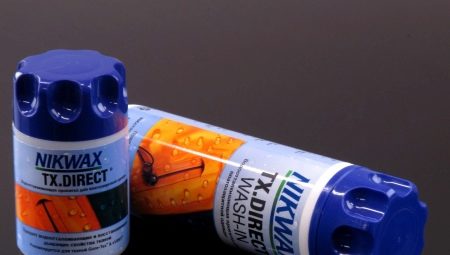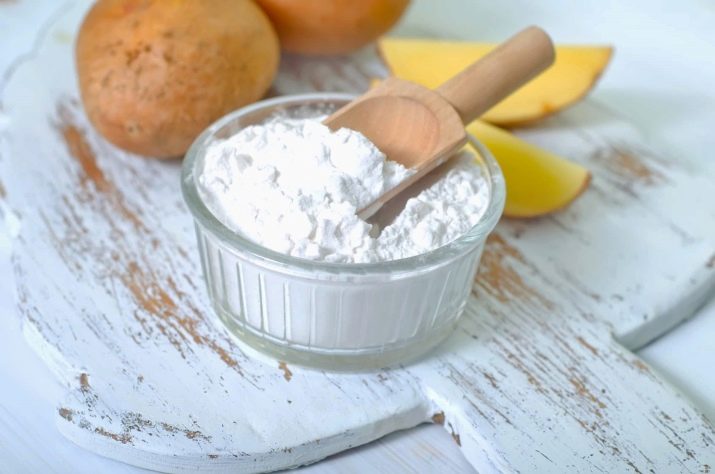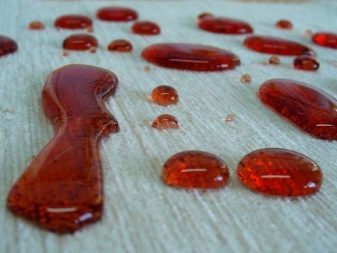All about fabric impregnations

Impregnations for fabrics improve the quality of the material, as well as make it more durable and comfortable to wear. Therefore, modern manufacturers often use them when sewing clothes, home textiles, as well as sports and hiking accessories.

Varieties
Now there are many types of impregnations that are used both in the production of fabrics and at home or on a hike.
Water repellent
The most popular are water-repellent products. The hydrophobic agent is most often used in the production of outerwear, as well as accessories for outdoor activities and tourism. The water repellent is applied to the surface of the fabric immediately after the dye dries.
The fabric impregnated with a moisture-repellent composition does not absorb water. This means that it does not become heavy, and does not freeze under low temperature conditions.


There are silicone, polyurethane and Teflon impregnations on sale. They are suitable for processing both synthetic and natural fabrics.
Refractory
This impregnation is also called fire retardant or fire retardant. The fabric treated with such a product does not burn in contact with an open source of fire. This is because the fabric gives off carbon dioxide from the eye. Because of this, it cannot catch fire.
Modern refractory impregnations are completely safe for human health. In addition, they do not change the color of matter and its structure.


Most often, materials with such impregnation are used to make uniforms for firefighters and people working where there is a possibility of an explosion or fire.
Dirt-repellent
This type of impregnation reduces the ability of the fabric to absorb dirt, oils and various emulsions.Materials treated with such means are easy to clean and serve their owners for a long time. Dirt-repellent impregnation is commonly used in workwear, furniture covers and upholstery.

Forms of issue
Fabric impregnators are available in the form of a spray or detergent. The former are highly regarded by buyers for their ease of use. The spray can be applied to the fabric very easily. The protective layer dries quickly. It perfectly protects the fabric from moisture. It is convenient to use aerosol impregnations for both clothes and tents, backpacks or pieces of furniture. Most sprays are easy to spray and leave no residue.
Impregnants produced in the form of laundry products also have their own advantages.

First of all, it is worth noting that such a tool penetrates deeper into the tissue. In addition, it spreads over its surface in a more even layer. By adding a product to the machine when washing, you can process several different things at one time.
Top manufacturers
When choosing a high-quality impregnation for fabric, you need to pay attention to products from trusted manufacturers.
-
DuPont. High-quality Teflon impregnation is suitable for processing outerwear, furniture and camping equipment. It is of high quality and does not wash off for a long time. It is her that many textile factories use in the production of fabrics to increase their moisture resistance. At home, this product can be used for additional processing.


- NIKWAX. This company produces many quality fabric impregnations. One of the most popular products is DIRECT SPRAY-ON. The water-based product is environmentally friendly and safe. It is allowed to use it on an ongoing basis. The product can be applied to items of any fabric. Another popular remedy is Nikwax Polar Proof. It is ideal for wool and thermal clothing. The material is easy to use and is suitable for improving the quality of winter wardrobe. The spray is very popular among fans of active winter recreation.


- Collonil. Products from this company can be used for processing any fabric. Their sprays are odorless and can be easily applied to clothing or home textiles. In this case, it is very important to treat the surface with products not one, but several times in a row. In this case, the result will be really noticeable.

- Trekko. The most popular product from this brand is Trekko Protect. It is especially popular with hikers and athletes. The product stays on the fabric for a long time. It perfectly protects clothes from moisture and dirt. You can use things within 15-20 minutes after treatment with such a spray.


- Salamander. Among the entire assortment of the company, it is worth highlighting the Salamander Universal SMS tool. The product is suitable for processing not only textiles, but also suede and leather. The tool does not harm things, but increases their service life. After processing the fabric with a spray, no streaks remain on its surface. The product is absorbed very quickly. The effect after applying the spray remains for a long time. Therefore, the product is consumed economically.

All of these tools can be easily found in the public domain.
Areas of use
Fabric impregnators are used to treat the following items.
-
Overalls. Almost all overalls after sewing are treated with protective impregnations. Thanks to the use of such products, things made from fabrics such as oxford or moleskin are reliably protected from dirt and excess moisture.
-
Equipment. Various impregnations are also used to create tents, awnings, backpacks and other equipment. They perfectly protect the fabric from rain and dirt. Therefore, you can use such things in any conditions.
-
Home textiles. Most often, tablecloth fabrics and materials used for sewing curtains and table textiles are treated with impregnations. This is done so that the matter does not allow moisture to pass through and is less dirty.Things made from such fabrics are usually used not only outdoors, but also in the bathroom and in the kitchen.
-
Outerwear. Outer clothing is also treated with special protective products. Suitable agents can be found for impregnating membrane materials as well as tweed or woolen materials.
-
Furniture. Moisture-repellent impregnations and fabric protection agents are often used to treat upholstery and upholstery. Such furniture does not require special maintenance and remains attractive for a long time.


When processing things with impregnations, you need to carefully follow the instructions on the package. You can only apply products to clean items. Since the protective layer wears off over time, things need to be re-treated regularly.
How to do it yourself?
There are several simple recipes for impregnations that you can easily do with your own hands at home.
-
Moisture repellent. This product is prepared with soap. So, 500 g of the product is grated and diluted in containers with 500 ml of hot water. In a separate container, mix 500 g of rosin and 500 mg of alcohol. Then all the products are mixed. The selected item is immersed in a container with a solution. You need to leave the product there for 12-14 hours. After that, the product must be dried well. There will be no significant effect from such a solution. But things treated with soap do not get wet so quickly.

- Dirt-repellent. A gasoline-based home soak can be used to treat work clothes. To prepare it, two liters of gasoline must be heated, and then mixed with paraffin. Add 300 g of glycerin and 100 g of petroleum jelly to the container. After that, the fabric is placed in a container for half an hour. Then the thing dries well. It is worth remembering that such impregnation is flammable. Therefore, it must be used with great care. In addition, in such clothes, a person should be away from open sources of fire.

- For rigidity. Starch is traditionally used to keep things in shape. Only clean things made from natural fabrics are processed with it. The material is not suitable for processing synthetics. You can use gelatin to work with silk, damascus and chiffon. Dilute two teaspoons of the dry product in water. Next, the gelatin is allowed to swell. The product is then heated in a water bath. The thing is placed in a container with a cooled solution, and then carefully dried in a straightened form.

Impregnating fabrics is a great way to improve fabric performance, making the fabric more durable. The main thing is to follow the instructions when applying the selected product to the fabric.










